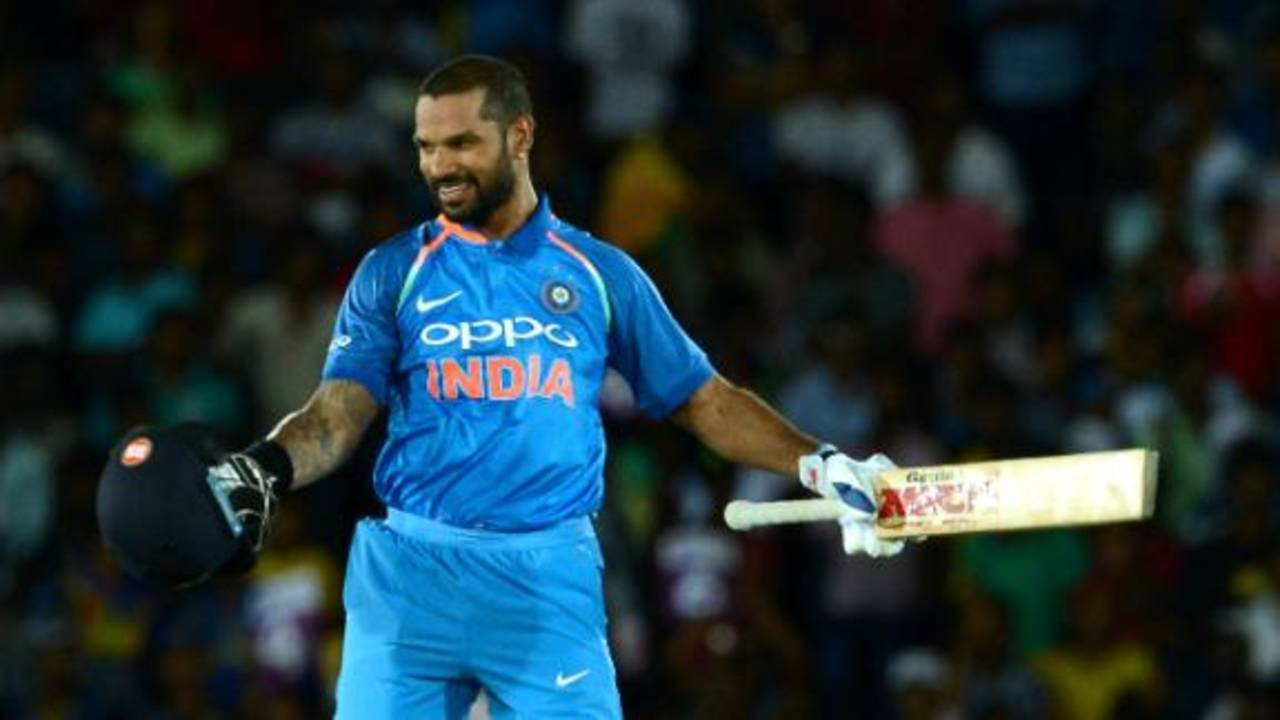A flexible batting order where "anyone could go anywhere" is central to Virat Kohli's ambitions of creating a limited-overs side that has an element of unpredictability to it. Having said that, he has his first-choice openers down pat. According to Kohli,
Rohit Sharma and
Shikhar Dhawan at the top of the "pecking order". However, Dhawan's
unavailability for the first three ODIs against Australia has given Kohli another opportunity to try out different combinations. As Dhawan tends to his ill wife, Kohli has to work out who would partner Rohit in the first half of the series.
But for a late injury or a left-field change, the answer is straightforward at the moment:
Ajinkya Rahane. After being tried in different positions early in his career, Rahane has now become the designated back-up opener. When he was captain, MS Dhoni had remarked how
Rahane's struggles with strike rotation on slower pitches went against him. With Rahane not being a natural power-hitter - a strike-rate of 78.35 is ample evidence - the team management reasoned that he couldn't be slotted in the middle order. For Rahane to play at his best, he needed to be opening the batting and facing the harder ball in the Powerplay.
Rahane has done that over the last two years with mixed results. While he began well in 2016, with two half-centuries in Australia, his form tapered off during the home series against New Zealand and England. He didn't get a game during the Champions Trophy, but the West Indies tour that followed proved to be redemptive. With 336 runs from five innings, including a hundred and three half-centuries, Rahane was the
top scorer on either side. You would imagine the performance would have automatically made him a regular opener, but Rahane had to make way for Rohit, who had been rested for the West Indies series. Later, in the absence of Dhawan, Rahane played the
final ODI in Sri Lanka and managed only five runs.
Should the selectors have any doubts about playing Rahane, they have a ready-made alternative in
KL Rahul. He began his ODI career with a flourish in Zimbabwe, scoring an unbeaten hundred on debut and a 63* in his third innings. Rahul has opened the batting in six out of nine innings, and despite his failures against England, looked likely to unseat Rahane as the first-choice third opener. However, a shoulder injury ruled him out of the Champions Trophy, and when he came back Kohli wanted him in the middle order. Rahul batted at Nos.3, 4 and 5 in the three innings he played in Sri Lanka and aggregated only 28 runs.
The rationale of having Rahul at No.4 or 5 seems straightforward at first glance: with Rohit, Dhawan and Rahane forming the opening core, Rahul can lend more heft to the middle-order. But, it isn't as straightforward: in a full squad featuring Dhawan and Rohit, there won't be room for Rahane and Rahul. They are both capable of batting in the middle order and also open if one of the regulars is injured. But, here is the quandary: Rahane was Man-of-the-Series in West Indies while Rahul, despite his good start across formats, failed to nail down his place in Sri Lanka.
So, while Rahane is likely to return to his comfort zone at the top, he could have very well carried drinks in all the matches had Dhawan not ruled himself out. Rahul, on the other hand, won't have that allowance, as he is set to continue batting in the middle order, despite having the skillsets to open. In such a situation, India seem to be heading towards effectively carrying four openers in their squad. While Rahul is not only made to bat out of position, he will also be competing with Manish Pandey and Kedar Jadhav, who both made a half-century each in the ODIs in Sri Lanka. That could be a touch unfair on both Jadhav and Pandey, who have done a fairly good job in the middle order.
However, Rohit, the vice-captain, felt the team's "versatility" was its strength. He said no batsman could afford to come into the team with a fixed position in mind and pointed to his own example. "I think both coach and captain clearly spoke about the roles each individual has to play," he said. "Before the start of the Sri Lanka tour, the captain said he is looking at KL as a No. 4 batsman. Ajinkya has opened in the West Indies. I guess that could be the option [as Dhawan's replacement]. Having said that, when you have this kind of versatility in your teams, it gives captain and coach a little bit of relief that these guys can take up any position they are offered.
"Whenever they have an opportunity to bat wherever, they will be happy to do it. You will have to play according to the team dynamics, whatever the team requires. That's how I became an opener because the team wanted me to open at that point. I'm sure no batsman will come into the fray thinking he is specialist opening batsman and needs to open the innings. We are all here thinking wherever the team wants us to play we should do the job. That's why we have the (rotation) policy going on. Shikhar's absence will be felt but we have got guys who can take on the role and perform well."
Kohli, unlike Dhoni, has clearly stated that he isn't averse to experimentation. The advantage for him is he still has a reasonable number of games to arrive at the right formula, with the World Cup still two years away. However, Kohli's immediate challenge is to find a role for a Rahane, who might have little to do when the regulars are back, and ensure that Rahul doesn't feel shortchanged in a new batting position.

